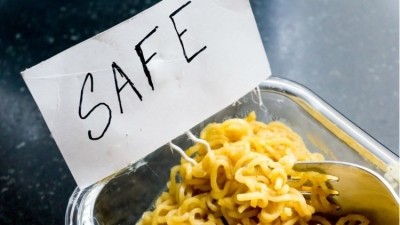Cheap, dangerous oil: Indian FDA warning over adulterated products amid FSSAI rule change

The state government food safety agency conducted a raid on a local oil mill earlier this year, and issued the warning after it discovered that higher-priced oils from sesame and groundnut were being adulterated with palm oil.
“[We found that] palm oil was being mixed with sesame oil and groundnut oil, [and unaware consumers were purchasing these] because of the cheap price,” said Tamil Nadu Food Safety and Drug Adminstration Department Designated Officer Dr R. Chithra to Times of India.
“[It is important to] obtain oils from reputed mills [and] avoid these adulterated products, [as] palm oil can cause health complications, especially heart-related ones.”
The adulterated oils could contain up to 70% palm oil content, to which an unidentified essence would be added so as to give the desired flavour or aroma.
In addition, the agency added that multiple loopholes were available in current legislation, which oil traders were making full use of. Examples included printing small-font printing mentioning palm oil on the label, as well as avoiding mention of the oil blend ratios.
This comes on the heels of FSSAI having announced a change to edible oil labelling back in December last year, specifying that every package containing oil blends needs to display a label stating ‘Blended Edible Vegetable Oil’ on the pack, as well as the name and nature of the oils.
The specific percentages of each oil by weight also need to be declared.
“The font size of [the declaration] ‘Blended Edible Vegetable Oil’ shall not be less than 5 mm, [and the font size of the other information] shall not be less than 3mm,” said FSSAI CEO Pawan Agarwal in an official statement.
“[For edible oil in packages weighing five litres and more], the font size of the ‘Blended Edible Vegetable Oil’ declaration shall not be less than 10mm.”
The regulation is set to be enforced come July 1 this year. A transition period of some six months was given to oil companies since the change was first officially announced.
Given the recent adulteration findings and FSSAI’s recent slew of regulatory implementation delays, it remains to be seen whether the quality and safety of edible oil in the country can be more guaranteed come July 1.
Edible oil adulteration checking device
FSSAI also recently announced that it had official certified the Raman-1 spectrometer for the testing of edible oil adulteration ‘after a long and rigorous validation process’.
The Raman-1 is a chalkboard duster sized device that uses micro-optics, mobile and cloud technology, artificial intelligence and machine learning to take adulteration testing for oils out of the lab.
According to the official release, the device can be used to scan through any transparent packaging without having to open it, and test results are instantly displayed on a mobile app.
“We have tested 20 different types of oils and over 90 different brands. [All non-compliant samples identified] were sent for laboratory testing, and in all cases, our system results were confirmed,” said Deepak Mehrotra, CEO of Oak Analytics which developed the Raman-1.
“Our system is not intended to replace laboratory testing, but is meant to be an inexpensive and quick supplement to existing quality assurance practices.”
The device is currently being tested by the Delhi, Chandigarh and Kerala state food safety authorities, and there are plans to roll out to more states in the future.



![A new food labelling regulations draft published by the FSSAI suggesting colour coded labelling for products high in fat, sugar and salt (HFSS) has drawn fervent protest from the nation’s food and beverage industry. [Image for illustration purposes only] ©Getty Images](/var/wrbm_gb_food_pharma/storage/images/_aliases/wrbm_medium/publications/food-beverage-nutrition/foodnavigator-asia.com/headlines/policy/wrong-move-wrong-time-india-s-colour-coded-labelling-regulations-draft-hit-red-light-with-industry/9916580-1-eng-GB/Wrong-move-wrong-time-India-s-colour-coded-labelling-regulations-draft-hit-red-light-with-industry.jpg)















